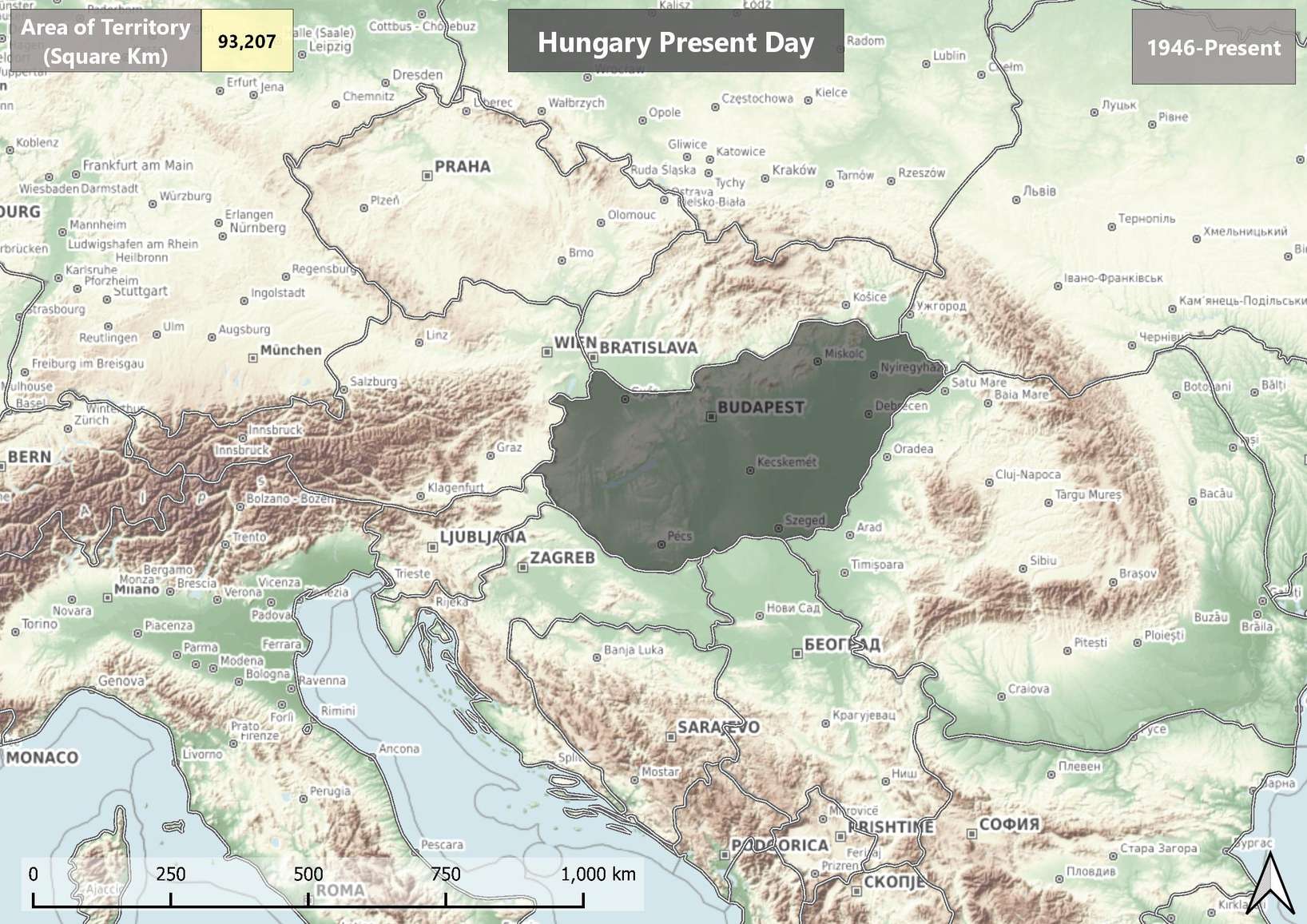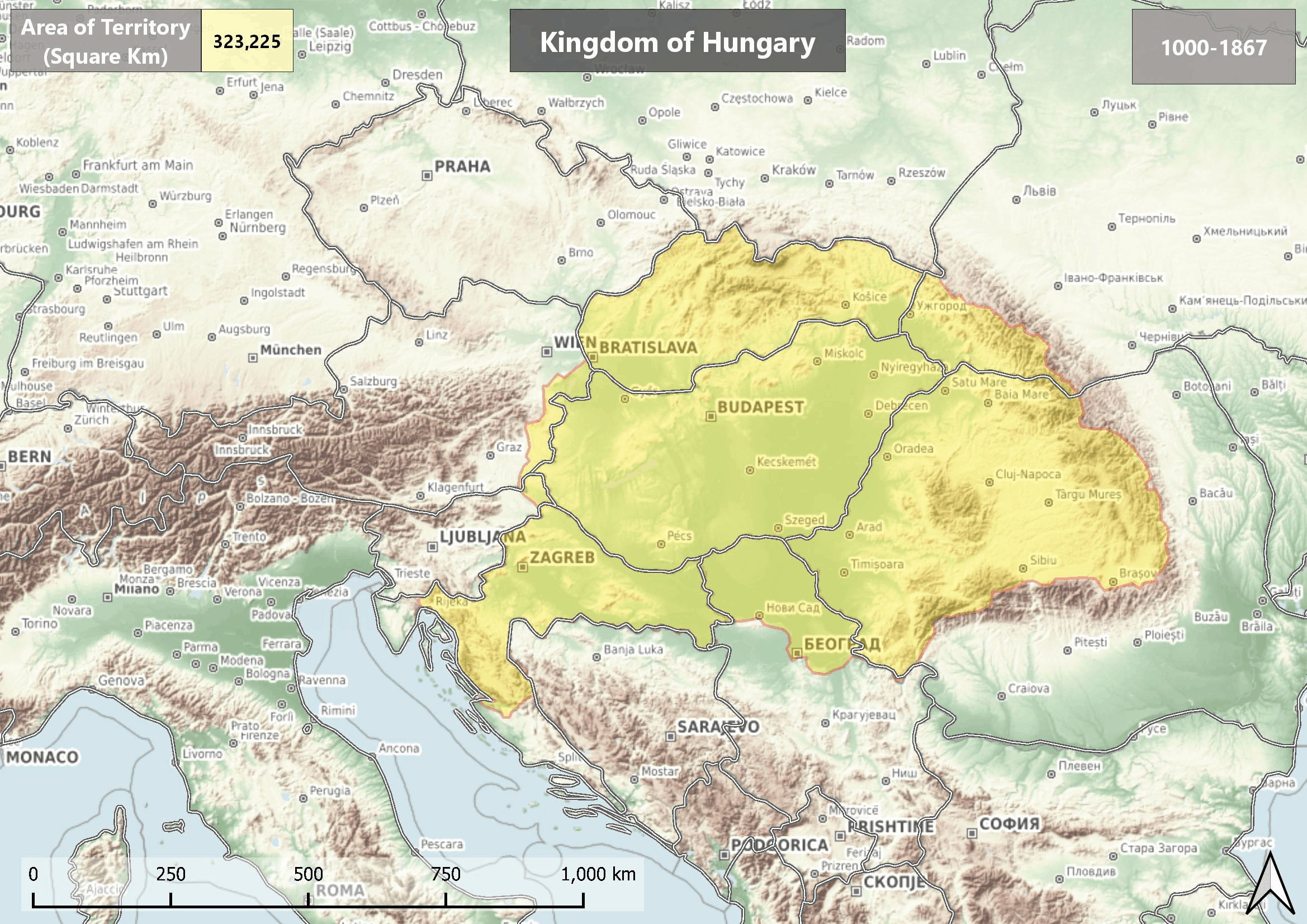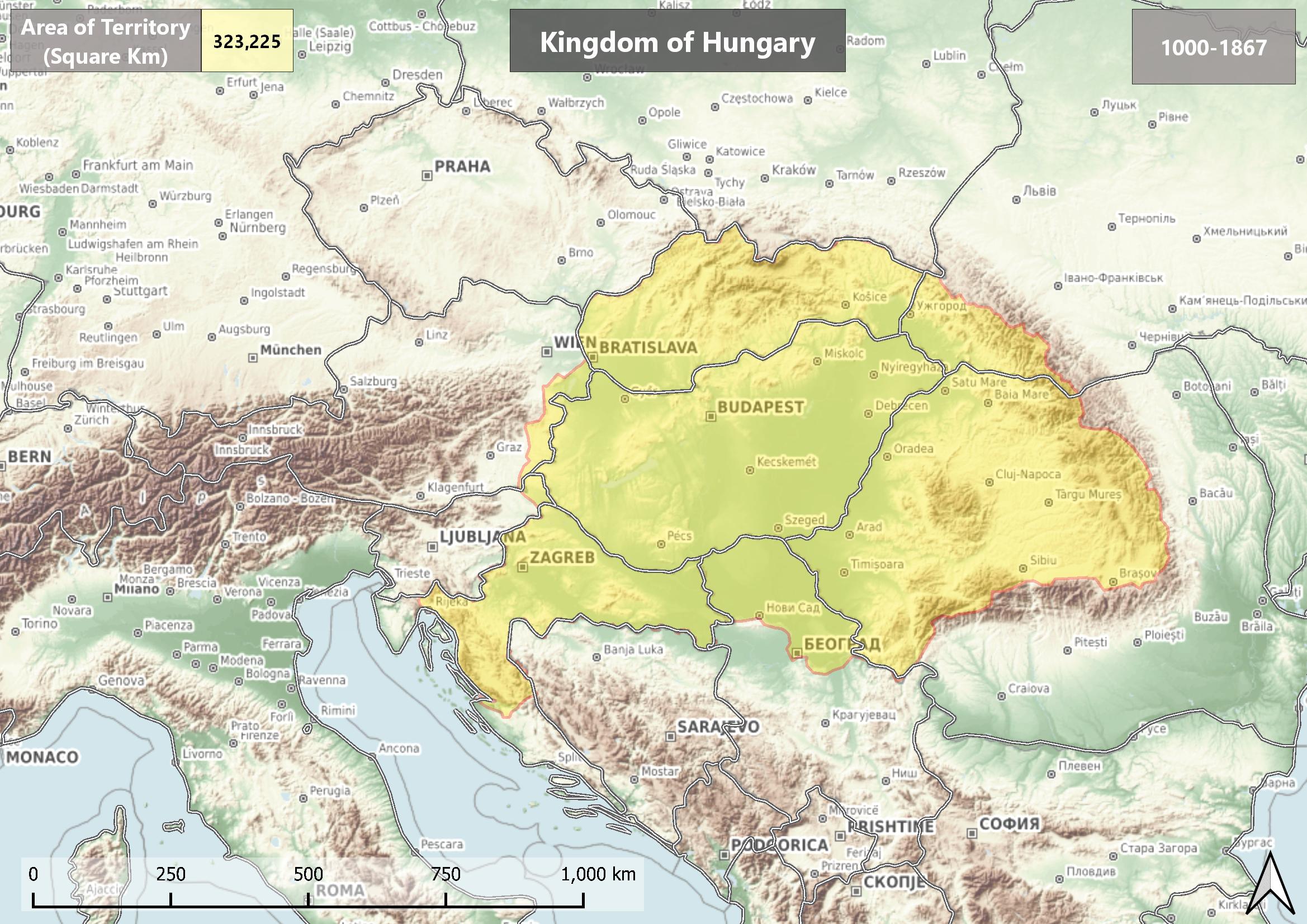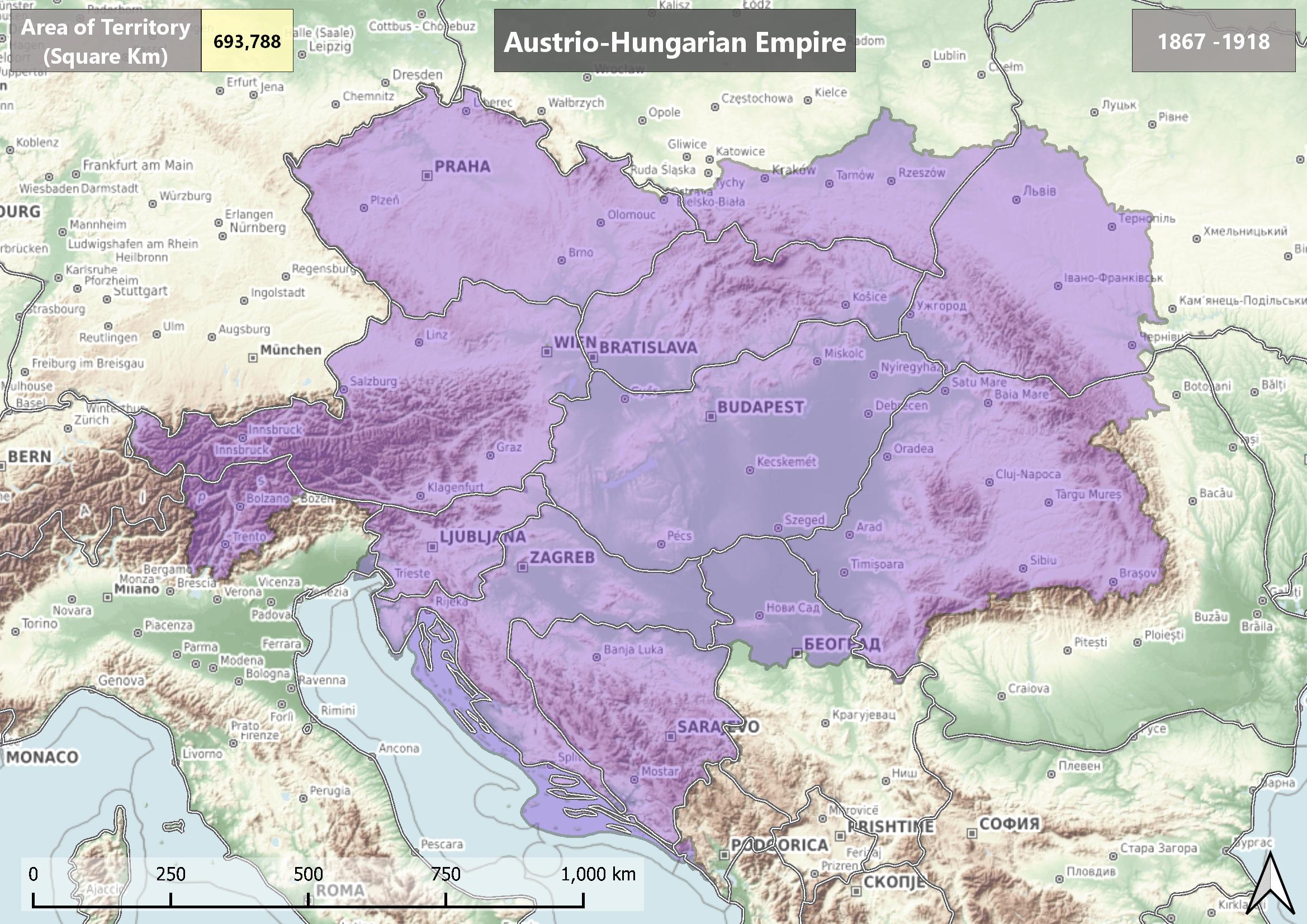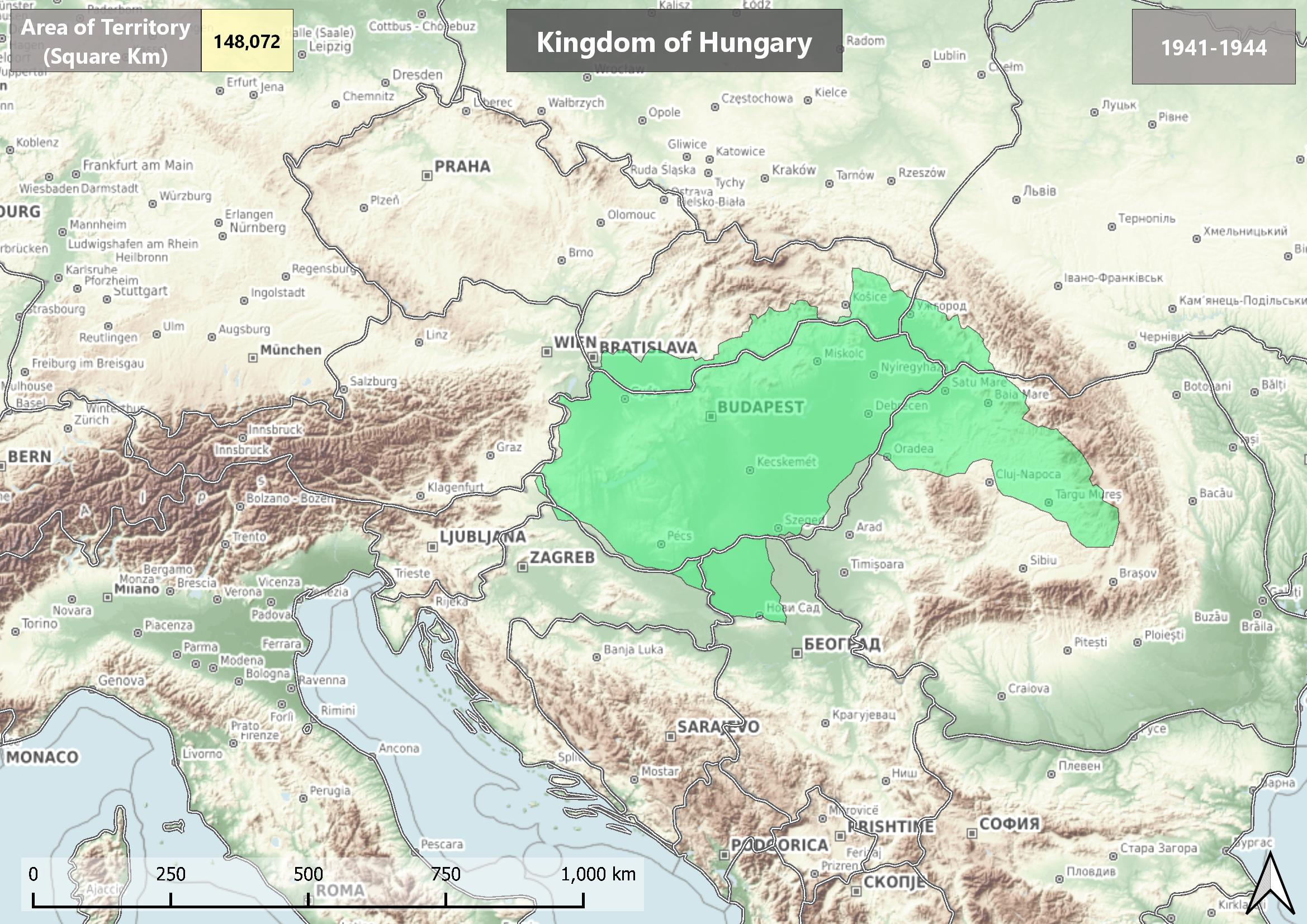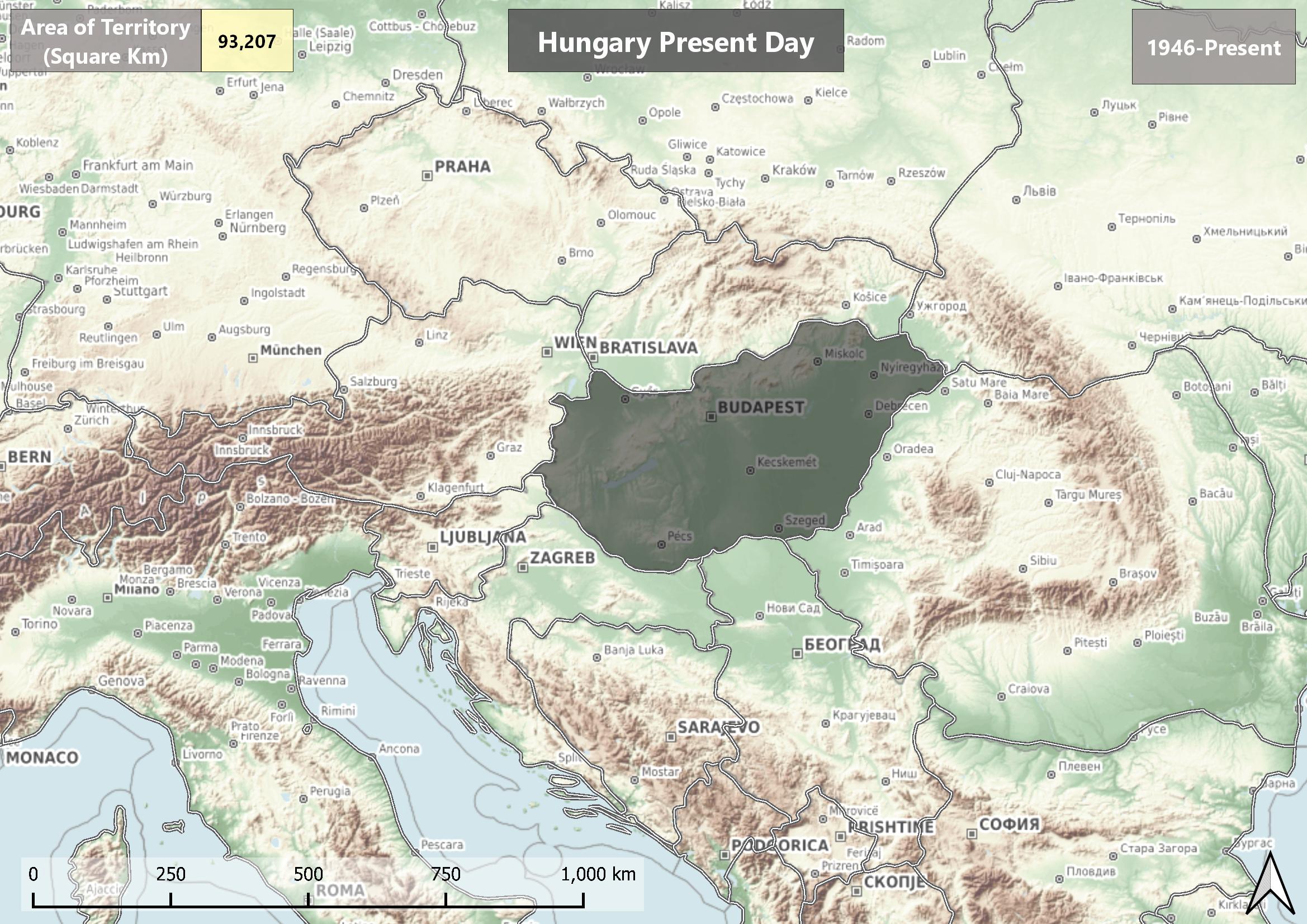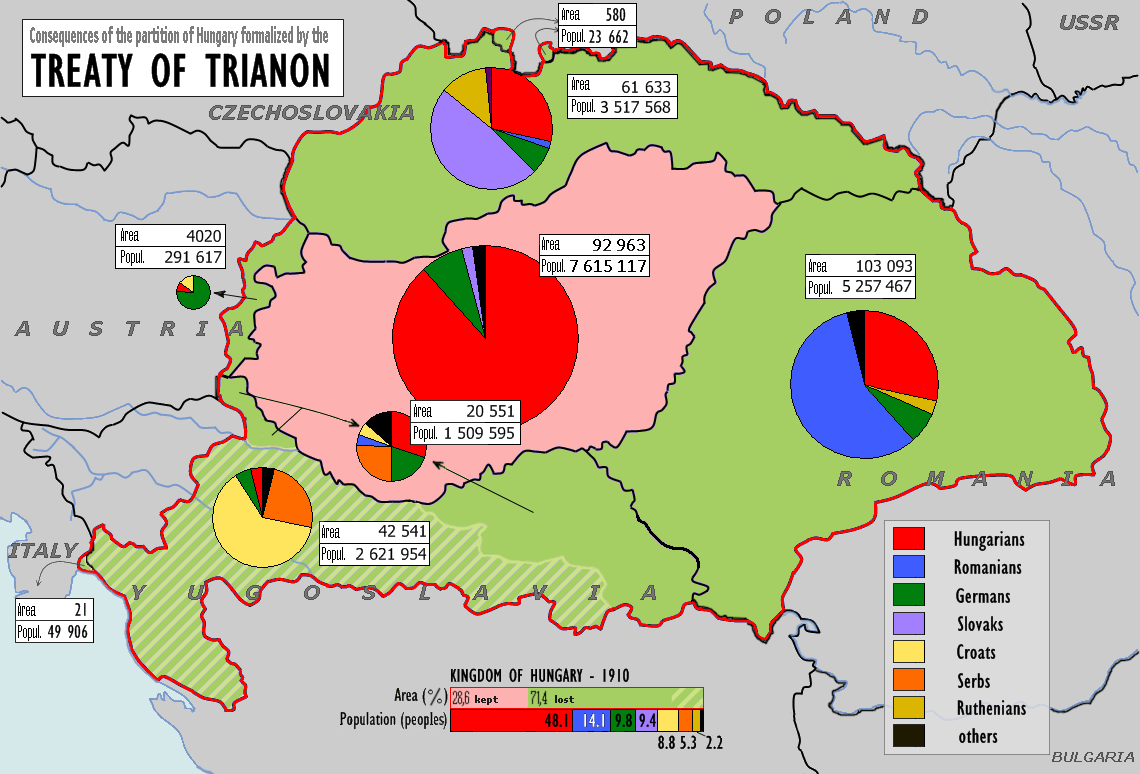
Transylvania
Where Dracula goes for spa treatments and hikes
foo
Transylvania and Hungarian Culture
Hungarians
Also known as Magyars (Magyarok) are a nation and ethnic group native to Hungary (Magyarország) and historical Hungarian lands who share a common ancestry, culture, history and language.
Also known as Magyars (Magyarok) are a nation and ethnic group native to Hungary (Magyarország) and historical Hungarian lands who share a common ancestry, culture, history and language.
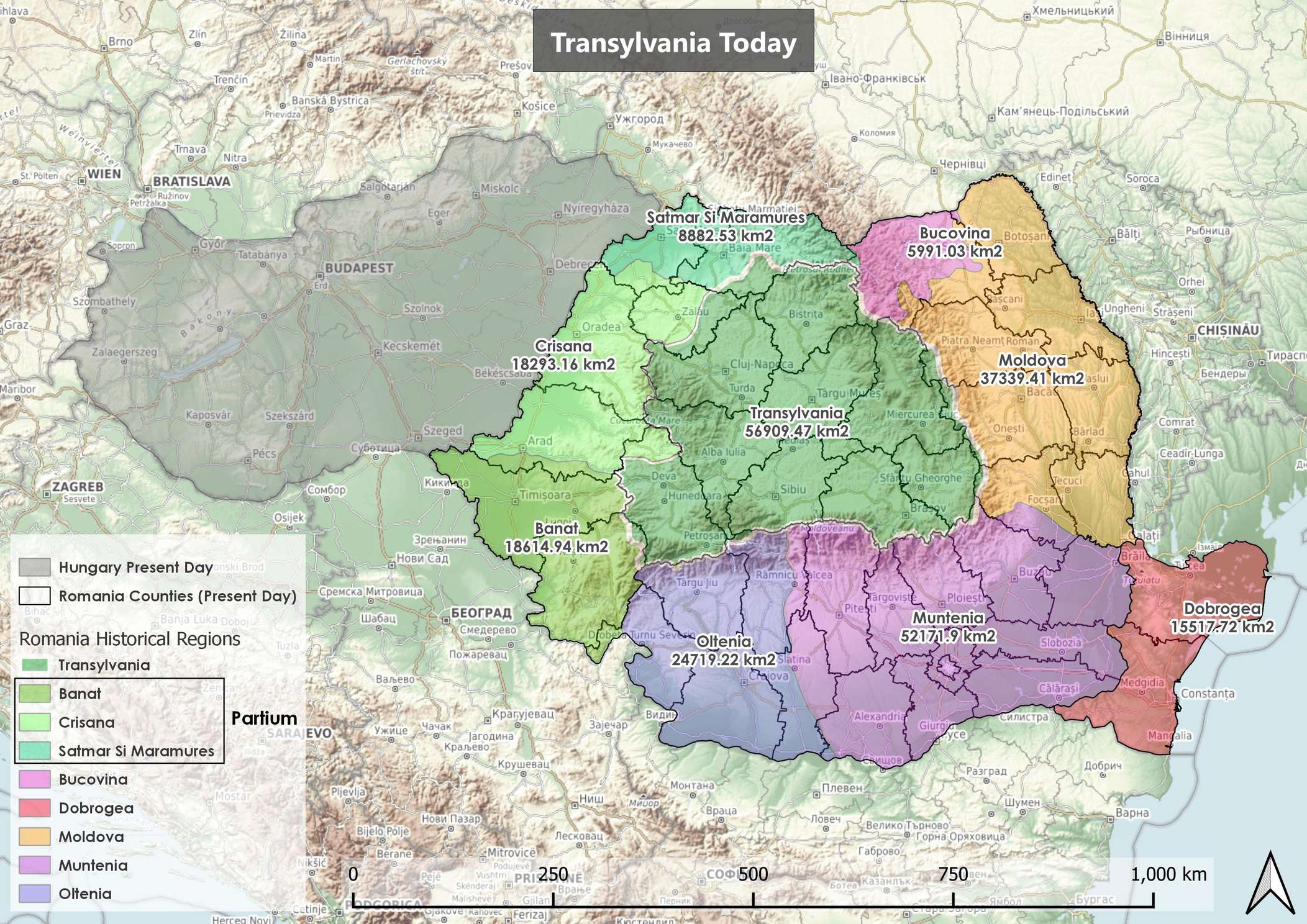
Transylvania
The earliest known reference to Transylvania appears in a Medieval Latin document of the Kingdom of Hungary in 1075 as ultra silvam, meaning "beyond the forest" (ultra meaning "beyond" or "on the far side of" and the accusative case of sylva (sylvam) "woods, forest"). Transylvania, with an alternative Latin prepositional prefix, means "on the other side of the woods".
The earliest known reference to Transylvania appears in a Medieval Latin document of the Kingdom of Hungary in 1075 as ultra silvam, meaning "beyond the forest" (ultra meaning "beyond" or "on the far side of" and the accusative case of sylva (sylvam) "woods, forest"). Transylvania, with an alternative Latin prepositional prefix, means "on the other side of the woods".
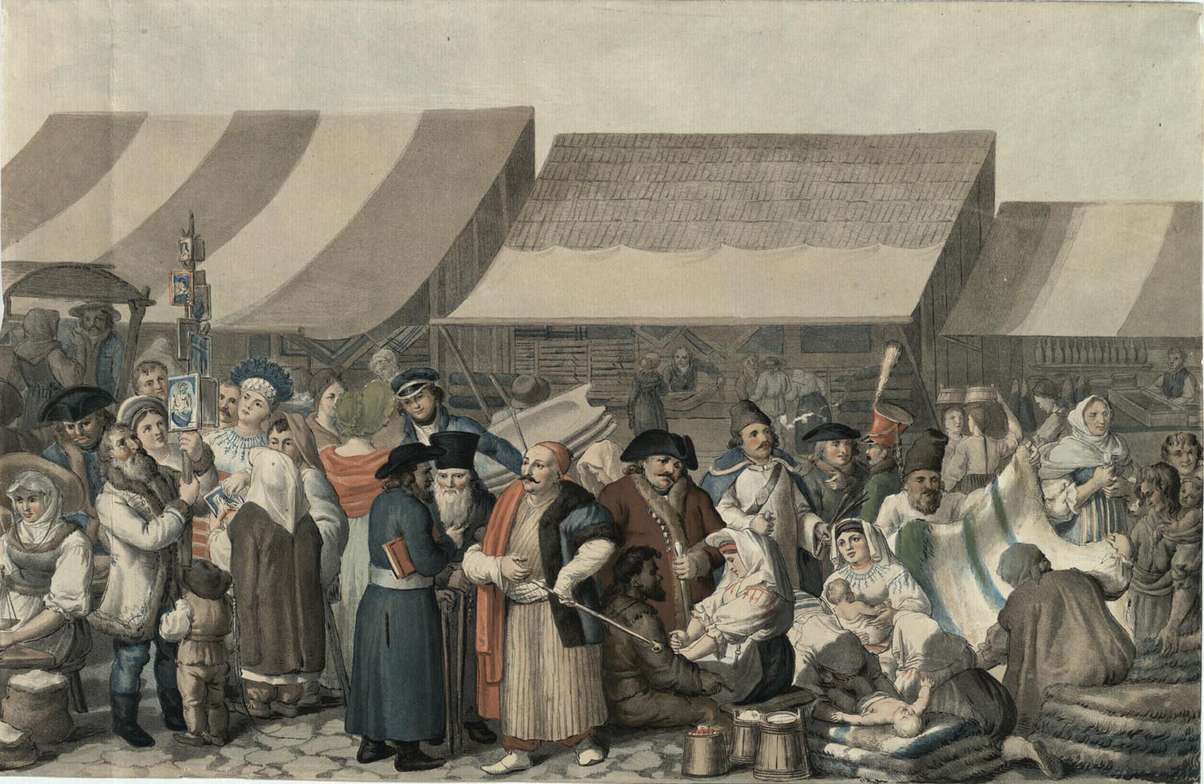
Interactive Transylvania Map
Language
Hungarian is a Uralic language spoken in Hungary and parts of several neighbouring countries. It is the official language of Hungary and one of the 24 official languages of the European Union. Outside Hungary it is also spoken by communities of Hungarians in the countries that today make up
● Slovakia
● western Ukraine (Subcarpathia)
● central and western Romania (Transylvania)
● northern Serbia (Vojvodina)
● northern Croatia and northeastern Slovenia (Mur region)
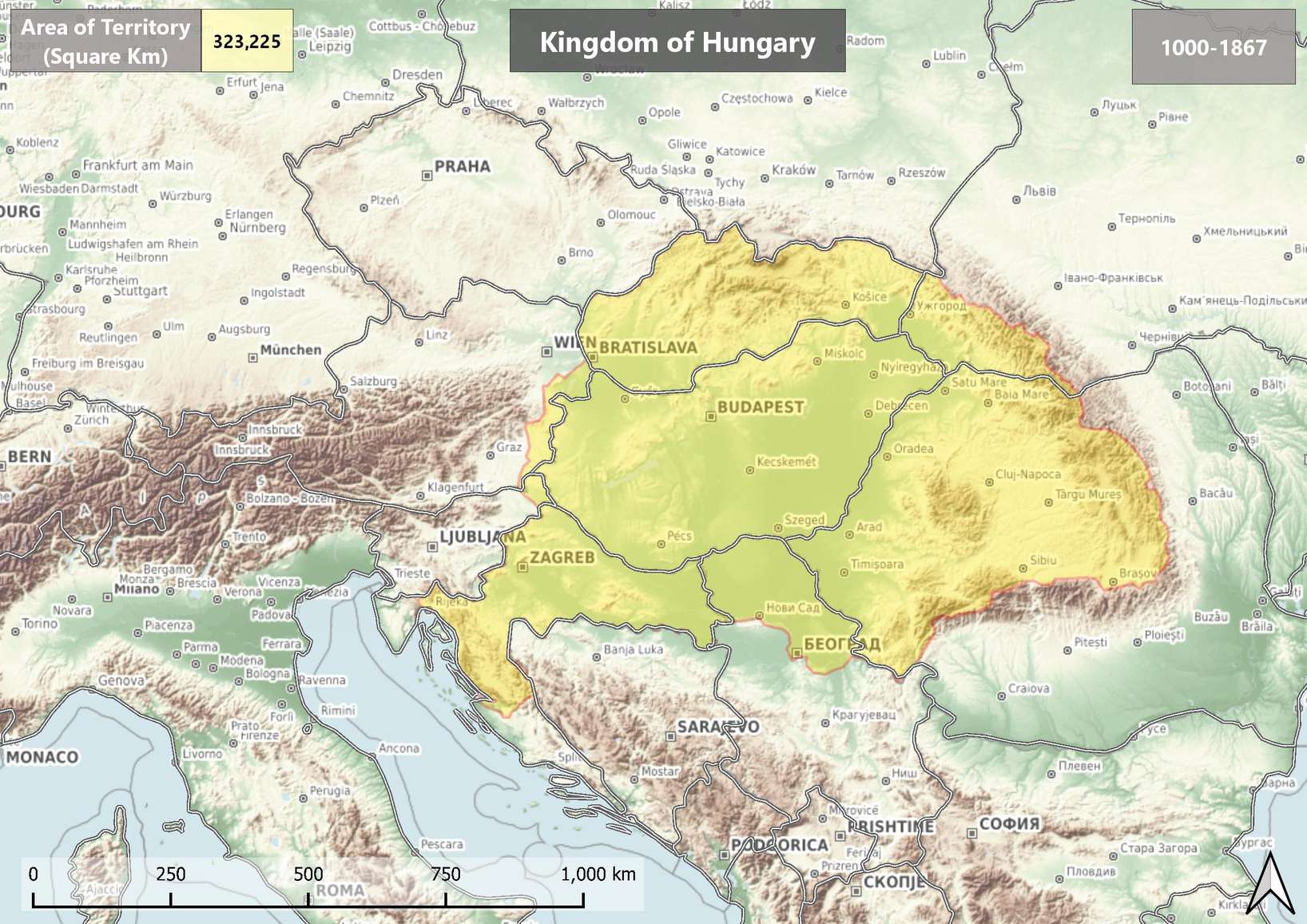
Kingdom of Hungary 1000-1867
The Magyars were defeated by the Pechenegs (Patzinaks) in 892 and were forced to migrate for the second time in their recent history. Again they headed westwards, this time to reach the Dacian lands that had most recently been controlled by the Avars, sweeping into the Carpathian basin in 895 and founding their kingdom in the following year.
The Magyars were defeated by the Pechenegs (Patzinaks) in 892 and were forced to migrate for the second time in their recent history. Again they headed westwards, this time to reach the Dacian lands that had most recently been controlled by the Avars, sweeping into the Carpathian basin in 895 and founding their kingdom in the following year.
02. Austro-Hungarian Empire 1867 and 1918
The empire of Austria, territories ruled by the Habsburg monarchy, dates to 1804. After the fall of Napoleon (1814–15), Austria became once more the leader of the German states, but the Austro-Prussian War of 1866 resulted in the expulsion of Austria from the German Confederation and caused Emperor Franz Joseph to reorient his policy toward the east and negotiated the Ausgleich with the Hungarians on February 8, 1867.
The empire of Austria, territories ruled by the Habsburg monarchy, dates to 1804. After the fall of Napoleon (1814–15), Austria became once more the leader of the German states, but the Austro-Prussian War of 1866 resulted in the expulsion of Austria from the German Confederation and caused Emperor Franz Joseph to reorient his policy toward the east and negotiated the Ausgleich with the Hungarians on February 8, 1867.
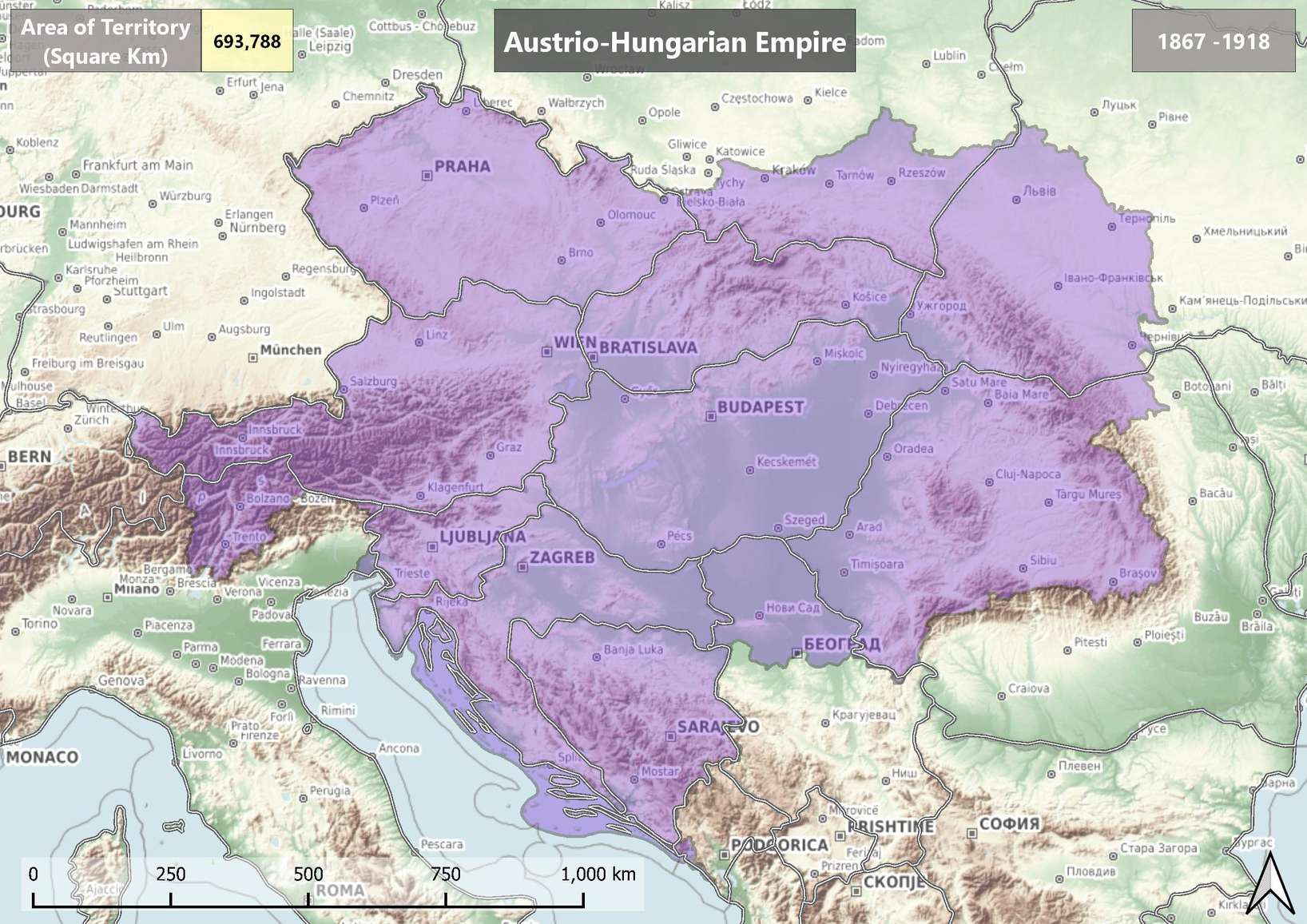
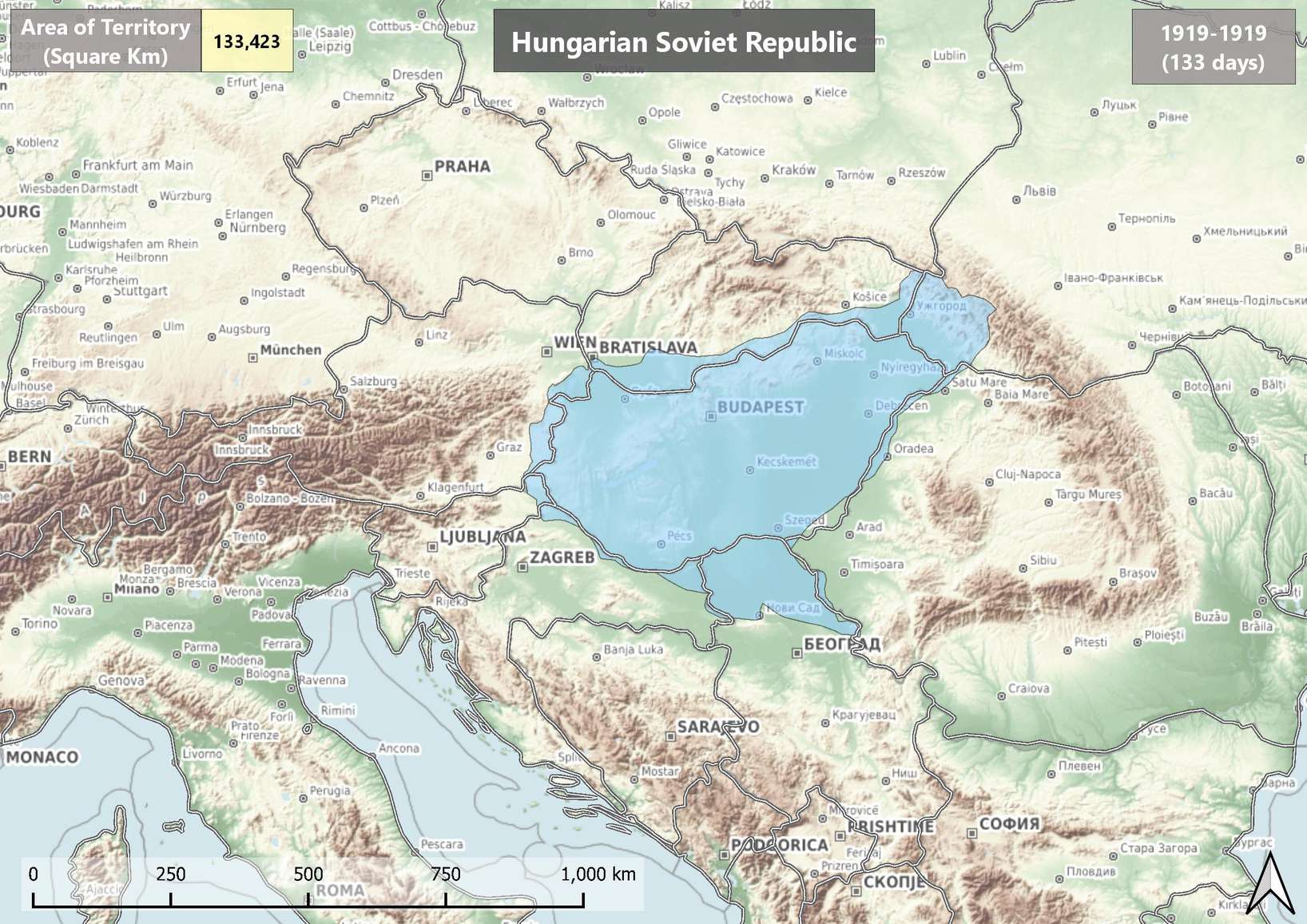
03. Hungarian Soviet Republic 1919-1919
On March 21st, 1919, the Hungarian Soviet Republic was proclaimed. On the 1st of August, 133 days later, this heroic chapter in the history of the Hungarian working class was brought to a close with the entry of the White Rumanian army into Budapest.
On March 21st, 1919, the Hungarian Soviet Republic was proclaimed. On the 1st of August, 133 days later, this heroic chapter in the history of the Hungarian working class was brought to a close with the entry of the White Rumanian army into Budapest.
04. Hungary Post Trianon 1920
A treaty imposed upon Hungary by the victorious Allies after World War I, as part of the Paris Peace Conference. Hungary had to accept the breakup of Austria Hungary. It was forced to cede Slovakia and Ruthenia to Czechoslovakia, Croatia to the new Kingdom of Serbs, Croats, and Slovenes (Yugoslavia from 1929), and Transylvania to Romania. Hungary thus lost two thirds of its prewar territory, and three fifths of its pre war population.
A treaty imposed upon Hungary by the victorious Allies after World War I, as part of the Paris Peace Conference. Hungary had to accept the breakup of Austria Hungary. It was forced to cede Slovakia and Ruthenia to Czechoslovakia, Croatia to the new Kingdom of Serbs, Croats, and Slovenes (Yugoslavia from 1929), and Transylvania to Romania. Hungary thus lost two thirds of its prewar territory, and three fifths of its pre war population.
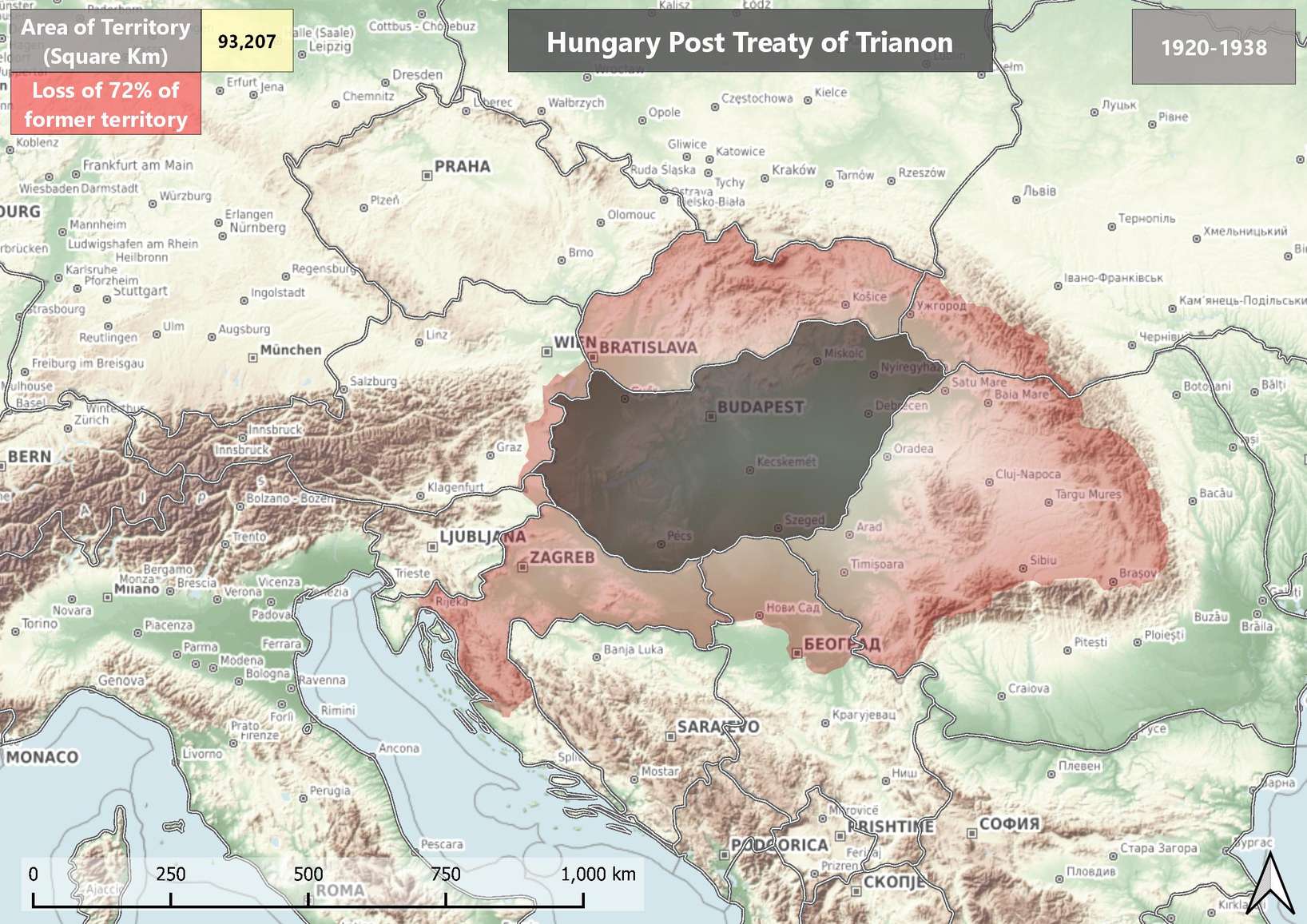
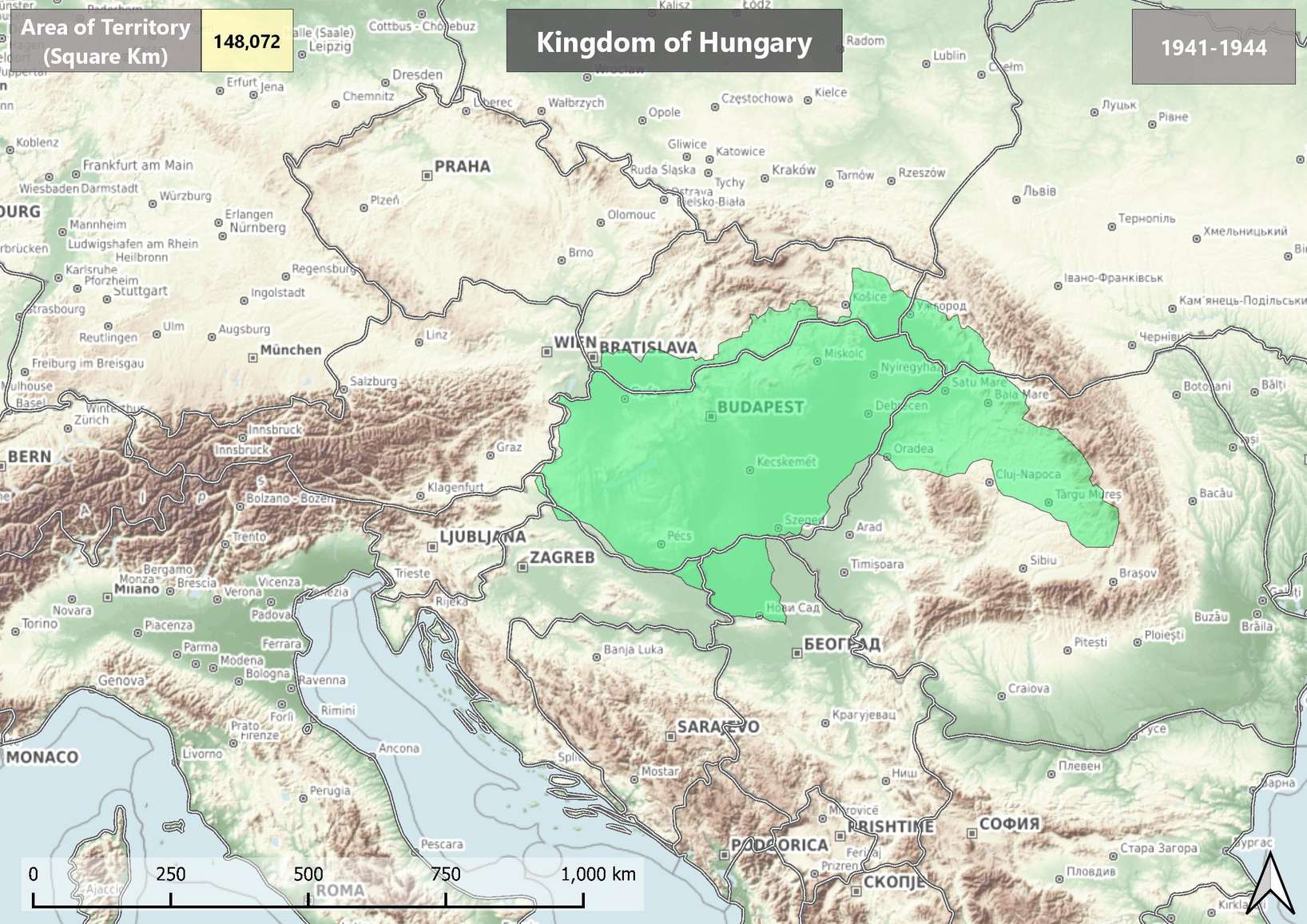
05. Kingdom of Hungary 1941-1944
Nazi Germany and Fascist Italy sought to peacefully enforce the claims of Hungarians on territories Hungary had lost with the signing of the 1920 Treaty of Trianon. Two significant territorial awards were made. These awards were known as the First Vienna Award and the Second Vienna Award. The map opposite shows Hungary at the height of the territorial awards.
Nazi Germany and Fascist Italy sought to peacefully enforce the claims of Hungarians on territories Hungary had lost with the signing of the 1920 Treaty of Trianon. Two significant territorial awards were made. These awards were known as the First Vienna Award and the Second Vienna Award. The map opposite shows Hungary at the height of the territorial awards.
06. Hungary Present Day 1946-Present
Since the fall of communism Hungary has had 8 Prime Ministers. Currently holder is Viktor Orban, elected for the second time May 2010. His first term was from 1998-2002. He is a rather colourful character, very proud and with conservative politics. He is not especially popular in European Parliament sessions due to speaking his mind and challenging the status quo regularly.
Since the fall of communism Hungary has had 8 Prime Ministers. Currently holder is Viktor Orban, elected for the second time May 2010. His first term was from 1998-2002. He is a rather colourful character, very proud and with conservative politics. He is not especially popular in European Parliament sessions due to speaking his mind and challenging the status quo regularly.
